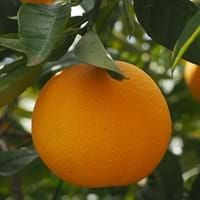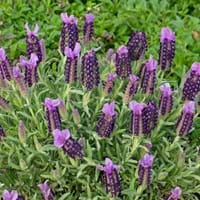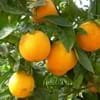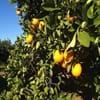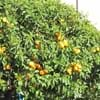Life Span
Perennial
Annual and Perennial
Origin
Southeastern Asia
Mediterranean
Types
Nules , Nadorcott
Not Available
Number of Varieties
Not Available
Habitat
Cold Regions
Mediterranean region
USDA Hardiness Zone
8-11
8-9
Sunset Zone
H1, H2, 8, 9, 12, 13, 14, 15, 16, 17, 18, 19, 20, 21, 22, 23, 24
4, 5, 6, 7, 8, 9, 10, 11, 12, 13, 14, 15, 16, 17, 18, 19, 20, 21, 22, 23, 24
Habit
Oval or Rounded
Cushion/Mound-forming
Flower Color
White, Red, Purple
Purple, Blue Violet, Plum
Flower Color Modifier
Bicolor
Bicolor
Fruit Color
Red, Orange
Not Available
Leaf Color in Spring
Green, Dark Green
Sea Green, Gray Green
Leaf Color in Summer
Green, Dark Green
Sea Green, Gray Green
Leaf Color in Fall
Green, Dark Green
Sea Green, Gray Green
Leaf Color in Winter
Light Green
Light Green
Leaf Shape
Acuminate
Long Narrow
Plant Season
Spring, Summer, Fall, Winter
Spring, Summer, Fall, Winter
Sunlight
Full Sun, Partial Sun
Full Sun
Type of Soil
Loam, Sand
Loam, Sand
The pH of Soil
Acidic, Neutral
Acidic, Neutral
Soil Drainage
Well drained
Well drained
Bloom Time
Spring, Late Spring
Late Spring, Early Summer, Summer
Tolerances
Drought, Light Frost
Drought
Where to Plant?
Ground
Container, Ground, Pot
How to Plant?
Seedlings
Seedlings
Plant Maintenance
Medium
Medium
Watering Requirements
Do not let dry out between waterings, Keep the Soil well drained, Requires consistently moist soil
Average Water Needs
In Summer
Lots of watering
Lots of watering
In Spring
Moderate
Moderate
In Winter
Average Water
Average Water
Soil pH
Acidic, Neutral
Acidic, Neutral
Soil Type
Loam, Sand
Loam, Sand
Soil Drainage Capacity
Well drained
Well drained
Sun Exposure
Full Sun, Partial Sun
Full Sun
Pruning
Prune in the late winter or spring, Remove damaged leaves, Remove dead branches, Remove dead leaves
Remove damaged leaves, Remove dead branches, Remove dead leaves
Fertilizers
All-Purpose Liquid Fertilizer, Equal amount of N,P,K
All-Purpose Liquid Fertilizer
Pests and Diseases
Black sooty mold, Citrus canker
Grasshoppers
Plant Tolerance
Drought, Light Frost
Drought
Flower Petal Number
Single
Single
Fragrant Bark/Stem
Yes
Yes
Foliage Texture
Medium
Fine
Foliage Sheen
Glossy
Matte
Attracts
Birds, Butterflies
Bees, Butterflies, Hummingbirds
Allergy
Mouth itching, Throat itching
Headache
Aesthetic Uses
Cottage Garden, Farmland
Showy Purposes
Beauty Benefits
Not Available
Not Available
Environmental Uses
Air purification
Air purification
Medicinal Uses
Digestive, Vitamin C
Cold, Nausia, Treating fever, Wounds
Part of Plant Used
Fruits
Flowers, Seeds
Other Uses
Added to salads, Culinary use
Air freshner, Used as an insecticide
Used As Indoor Plant
No
Yes
Used As Outdoor Plant
Yes
Yes
Garden Design
Container, Edible, Feature Plant, Fruit / Fruit Tree, Houseplant, Topiary / Bonsai / Espalier, Tropical
Bedding Plant, Container, Cutflower, Feature Plant, Herb, Vegetable, Mixed Border, Rock Garden, Wall
Botanical Name
CITRUS reticulata
Lavandula Stoechas
Common Name
Clementine, Mandarin, Tangerine
Topped Lavender, Spanish Lavender
In Hindi
clementine
Spanish Lavender
In German
Clementine
Spanish Lavender
In French
Citrus clementina
Spanish Lavender
In Spanish
Citrus x clementina
Spanish Lavender
In Greek
clementine
Ισπανικά Λεβάντα
In Portuguese
clementine
Spanish Lavender
In Polish
clementine
Spanish Lavender
In Latin
clementine
Spanish Lavender
Phylum
Magnoliophyta
Magnoliophyta
Class
Magnoliopsida
Magnoliopsida
Order
Sapindales
Lamiales
Family
Rutaceae
Lamiaceae
Clade
Not Available
Angiosperms, Asterids, Eudicots
Tribe
Not Available
Lavanduleae
Subfamily
Not Available
Nepetoideae
Season and Care of Clementine and Spanish Lavender
Season and care of Clementine and Spanish Lavender is important to know. While considering everything about Clementine and Spanish Lavender Care, growing season is an essential factor. Clementine season is Spring, Summer, Fall and Winter and Spanish Lavender season is Spring, Summer, Fall and Winter. The type of soil for Clementine is Loam, Sand and for Spanish Lavender is Loam, Sand while the PH of soil for Clementine is Acidic, Neutral and for Spanish Lavender is Acidic, Neutral.
Clementine and Spanish Lavender Physical Information
Clementine and Spanish Lavender physical information is very important for comparison. Clementine height is 460.00 cm and width 300.00 cm whereas Spanish Lavender height is 60.00 cm and width 60.00 cm. The color specification of Clementine and Spanish Lavender are as follows:
Clementine flower color: White, Red and Purple
Clementine leaf color: Green and Dark Green
Spanish Lavender flower color: Purple, Blue Violet and Plum
- Spanish Lavender leaf color: Sea Green and Gray Green
Care of Clementine and Spanish Lavender
Care of Clementine and Spanish Lavender include pruning, fertilizers, watering etc. Clementine pruning is done Prune in the late winter or spring, Remove damaged leaves, Remove dead branches and Remove dead leaves and Spanish Lavender pruning is done Remove damaged leaves, Remove dead branches and Remove dead leaves. In summer Clementine needs Lots of watering and in winter, it needs Average Water. Whereas, in summer Spanish Lavender needs Lots of watering and in winter, it needs Average Water.
